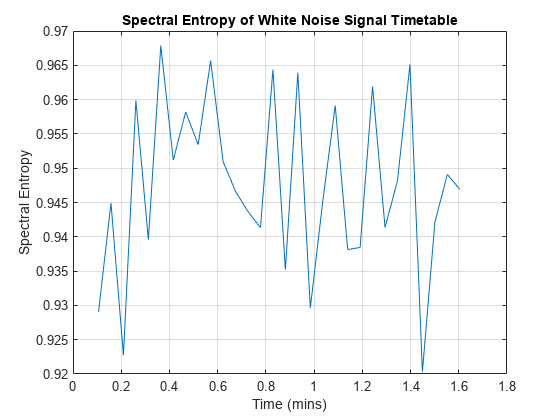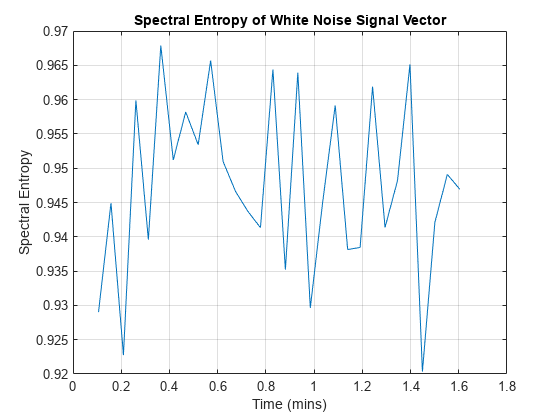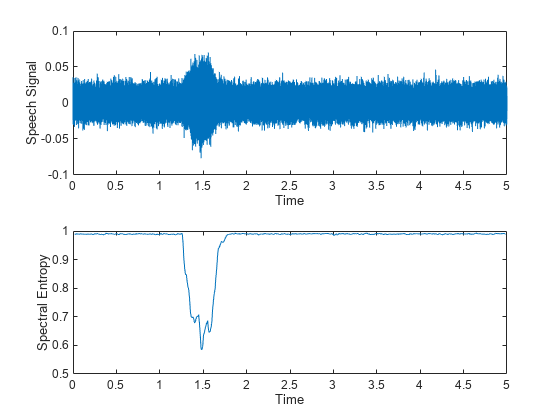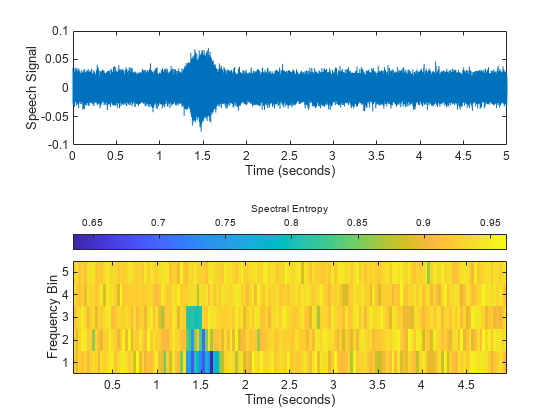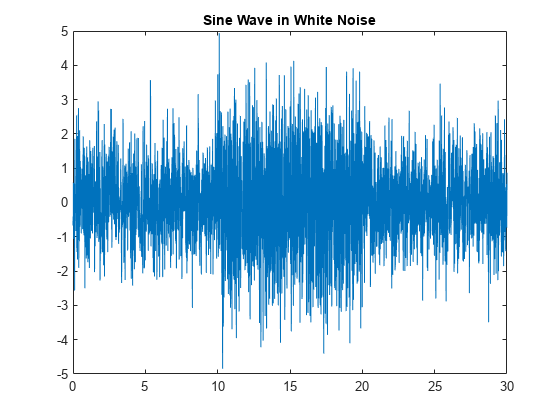pentropy
(To be removed) Spectral entropy of signal
pentropy will be removed in a future release. Use spectralEntropy instead. For more information, see Version History.
Syntax
Description
se = pentropy(xt)timetable
xt as the timetable
se. pentropy computes the spectrogram
of xt using the default options of
pspectrum.
se = pentropy(___,Name=Value)Name=Value with any of
the input arguments in previous syntaxes.
[
returns the spectral entropy se,t] = pentropy(___)se along with the time vector
or timetable
t. If se is a
timetable, then t is equal to the
row times of timetable
se. This syntax does not apply if
Instantaneous is set to
false.
pentropy(___) with no output arguments plots
the spectral entropy against time. If Instantaneous is set
to false, the function outputs the scalar value of the
spectral entropy.
Examples
Input Arguments
Name-Value Arguments
Output Arguments
More About
References
[1] Pan, Y. N., J. Chen, and X. L. Li. "Spectral Entropy: A Complementary Index for Rolling Element Bearing Performance Degradation Assessment." Proceedings of the Institution of Mechanical Engineers, Part C: Journal of Mechanical Engineering Science. Vol. 223, Issue 5, 2009, pp. 1223–1231.
[2] Sharma, V., and A. Parey. "A Review of Gear Fault Diagnosis Using Various Condition Indicators." Procedia Engineering. Vol. 144, 2016, pp. 253–263.
[3] Shen, J., J. Hung, and L. Lee. "Robust Entropy-Based Endpoint Detection for Speech Recognition in Noisy Environments." ICSLP. Vol. 98, November 1998.
[4] Vakkuri, A., A. Yli‐Hankala, P. Talja, S. Mustola, H. Tolvanen‐Laakso, T. Sampson, and H. Viertiö‐Oja. "Time‐Frequency Balanced Spectral Entropy as a Measure of Anesthetic Drug Effect in Central Nervous System during Sevoflurane, Propofol, and Thiopental Anesthesia." Acta Anaesthesiologica Scandinavica. Vol. 48, Number 2, 2004, pp. 145–153.
